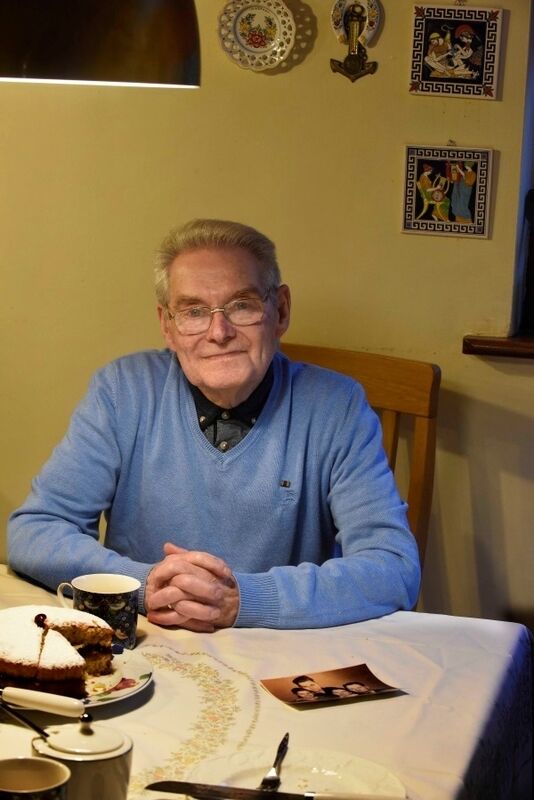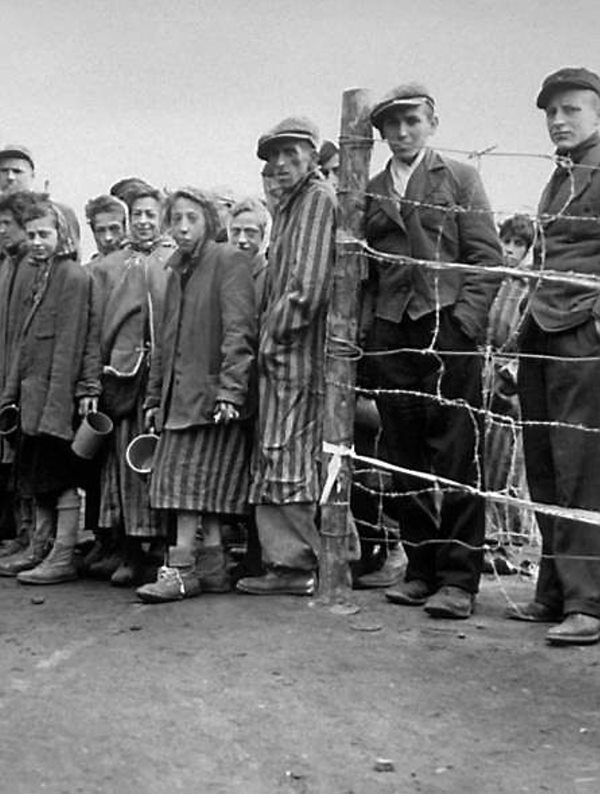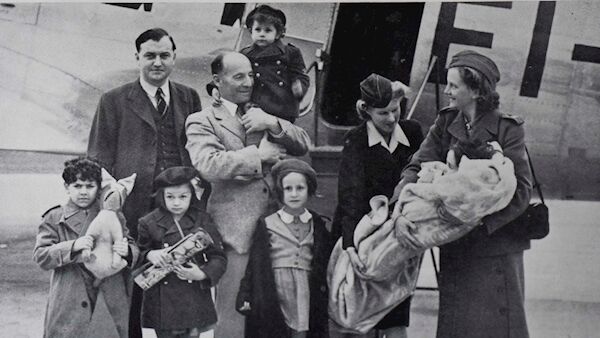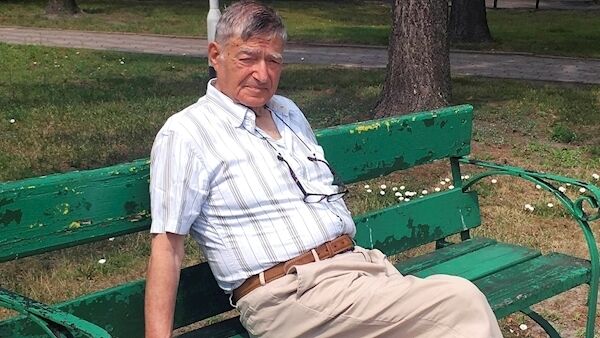The stories of three Holocaust survivors living in Dublin

Ahead of National Holocaust Memorial Day tomorrow, we talk to three of the four remaining survivors left in Ireland. Their stories have never been more important, writes .
Tomi Reichental was just nine years old when he was captured by the Nazis in November 1944 along with his mother, brother, grandmother, aunt, and cousin.

Herded into a cattle car, they spent seven nights living in unbearable conditions with neither privacy nor hygiene.
When the doors were eventually flung open, the terrified family was greeted by barking dogs and bullying shouts from armed SS men.
Tomi and his family had arrived at the notorious Bergen-Belsen concentration camp where he was to stay until the liberation of the camp in April 1945.
“What I witnessed as a nine-year-old boy is impossible to describe,” recalls Tomi, now 83:
The starvation, the cruelty of the camp guards, the cold and disease
“People, who were just skin and bone and looked like living skeletons, were walking around very slowly, some of them dropping to the ground, never to get up again.
“They were dying in their hundreds, their emaciated bodies left where they fell or thrown into heaps.
“In front of our barracks there were piles of decomposing corpses.
For many prisoners in Bergen-Belsen, the conditions were too much to bear and they threw themselves on the barbed wire at night to be shot in order to put an end to their misery
“We found their corpses there in the mornings. In all, 70,000 prisoners of Bergen-Belsen are buried there in mass graves. I lost 35 members of my family in the Holocaust.” In Eastern Poland another boy around the same age as Tomi had been, escaped into the forest when his village, Bilgoraj - one of thousands to come under Nazi occupation in 1942 - was burned to the ground in November of that year. Jan Kaminski’s mother, father and three siblings were deported to the Belzec death camp located 70 kilometres away.

It’s believed that up to 500,000 Jews were murdered by the SS at Belzec which makes it the third deadliest extermination camp, exceeded only by Treblinka and Auschwitz. However, despite the enormous number of people murdered at Belzec, the camp is not as well-known as either Auschwitz or Treblinka, because of the lack of viable witnesses to testify about the operations there.
Jan, whose real name was actually Chaim Srul Zybner (he changed it in order to stay alive) somehow survived, foraging, working as a shepherd, and carrying out farm work and narrowly escaping death time and time again. On one occasion, the young boy, who later became a runner and mascot for the Russian army’s Polish Corps, was captured and placed at the end of a line of 20 people who were to be shot.
When it was Jan’s turn to face the rifle, he stood with tears running down his face and his hands in his pockets. Inexplicably, the soldier turned away.
On another occasion the boy was captured and placed aboard a transport of Jews believed to be destined for one of the concentration camps - only to be taken off the train at a border crossing by a soldier in search of a suitable boy to carry out farm-work.
After coming under the protection of the Red Cross, Jan was sent to Scotland and later worked as a bus-boy at the famous Dorchester Hotel in London. In later years, he visited Ireland, won a scholarship to Trinity College, where he studied economics and philosophy and afterwards set up the well-known Concord Travel Agency:
His daughter Jadzia Kaminska says that for 30 years Jan, now aged 86, searched for surviving family members, but to date no trace of immediate family members has been found.
Now 76 and a mother of two adult children, Suzi Diamond still remembers the knock on the door which presaged her family’s deportation to Ravensbruck camp and later, Bergen-Belsen. She was only two and a half at the time.
Her mother died shortly after the liberation of the camp. Her father had died in 1943 in the Soviet Union after being forcibly conscripted into the slave labour corps of the Hungarian Army. For decades, Suzi and her brother Terry believed they had no living relatives.
Then three years ago, a cousin who is still living in the family’s home village in in Karcag in Hungary, made contact. Alas Terry, who had passed away in 2007 was never to know that relatives still existed - family members who tried to trace the young brother and sister following the war succeeded in tracing them to Sweden, where had they lived for a year after liberation. However, the siblings were brought to Ireland by Irish doctor, Dr Bob Collis, who worked for the International Red Cross and became known as the Irish Schindler for his work with the children of Bergen-Belsen. However the fact that Terry’s name was actually George on his birth certificate is believed to have significantly confused matters.
In 1941 the Soviets arrested Walter Sekules’ family as enemy aliens and deported them to Siberia.
Walter’s family endured harsh conditions but somehow survived the war - and three Soviet camps during more than six years in exile.

Tomorrow, on Sunday January 27th, the stories of these people, their families, the six million Jewish people and millions of others who were persecuted and murdered, will be recalled during a special gathering of Irish Holocaust survivors and their families at Dublin’s Mansion House.
Speaking at the event alongside President Michael D Higgins and Minister for Justice and Equality, Charlie Flanagan, TD. are three Holocaust survivors; Tomi Reichental, Suzi Diamond and Walter Sekules. Jadzia Kaminska will represent her father Jan Kaminski at the solemn, dignified ceremony, which includes readings, survivors’ recollections, candle-lighting, music and the Scroll of Names read by young people. It will be attended by people from all walks of Irish life.

“Three years ago I started to compare the tragedy that happened to the Jews in the nineteen thirties when they wanted to escape to Europe and nobody wanted them, with the tragedy of the refugees of today who are escaping persecution, rape and murder - and people don’t want them,” recalls Tomi.
“People asked me how could I compare the Holocaust to what is happening today?
I say when you are looking at pictures of refugees in 1939 and in the 1940s, you see the queues of Jews walking with their little bags; you can see struggle in the picture.“Now we see the refugees walking and trying to find sanctuary after long journeys. When you look at the pictures they look the same
“These people are suffering. Today we hear this comparison quite often but when I said this, I was criticized because people thought they were two different things. It seems to me that the two groups of people were the same.
“Now many people are comparing it to the experience of the Jews in the 1930s.
“Today, right-wing politics is on the rise. Anti-Semitism is on the rise, racism is one the rise; you have anti-semitic and racist slogans appearing in demonstrations abroad. “ The Mansion House commemoration is very important, he says, because of what it stands for:
“As far as I am concerned from my point of view, history is beginning to repeat itself. The Holocaust started with a whisper, and then abuse and finally murder.” It’s very important to remember that, she says:
"When I am speaking to young people I warn them that they should not be bystanders if they see someone being bullied at school for example because of their skin is a different colour - they should report it.
“They should stand up to these people because if we don’t stand up, this type of thing just grows in strength and ends up in tragedy. The commemoration is very important - it reminds people about what happened and about the importance of making sure something similar does not happen again.”
Explains Eibhlin Byrne, Chairperson of Holocaust Education Trust Ireland, which is hosting the event in association with the Department of Justice and Equality, The Office for the Promotion of Migrant Integration and Dublin City Council:
“In 1930s Europe, fear and uncertainty nurtured extremes, unleashing a cataclysmic disaster on the world. The Holocaust did not emerge from nowhere. “It was the result of fear and uncertainty. It was the result of seeds sown over many years. Seeds of hatred, mistrust, of antisemitism. Ultimately, the seeds of evil.
“Those who perpetrated the Holocaust were, like their victims, men and women, sons and daughters, cherished family members. And yet, given fertile ground for hatred, they became killers and the world became a dark and dangerous place.
“At times of great uncertainty, there is always a danger that extremists will triumph. It can emerge amongst any nations at any stage. Our vigilance and resolve to fight hatred and fear whenever it emerges will ensure that the Holocaust cannot, will not, and must not be repeated.”










